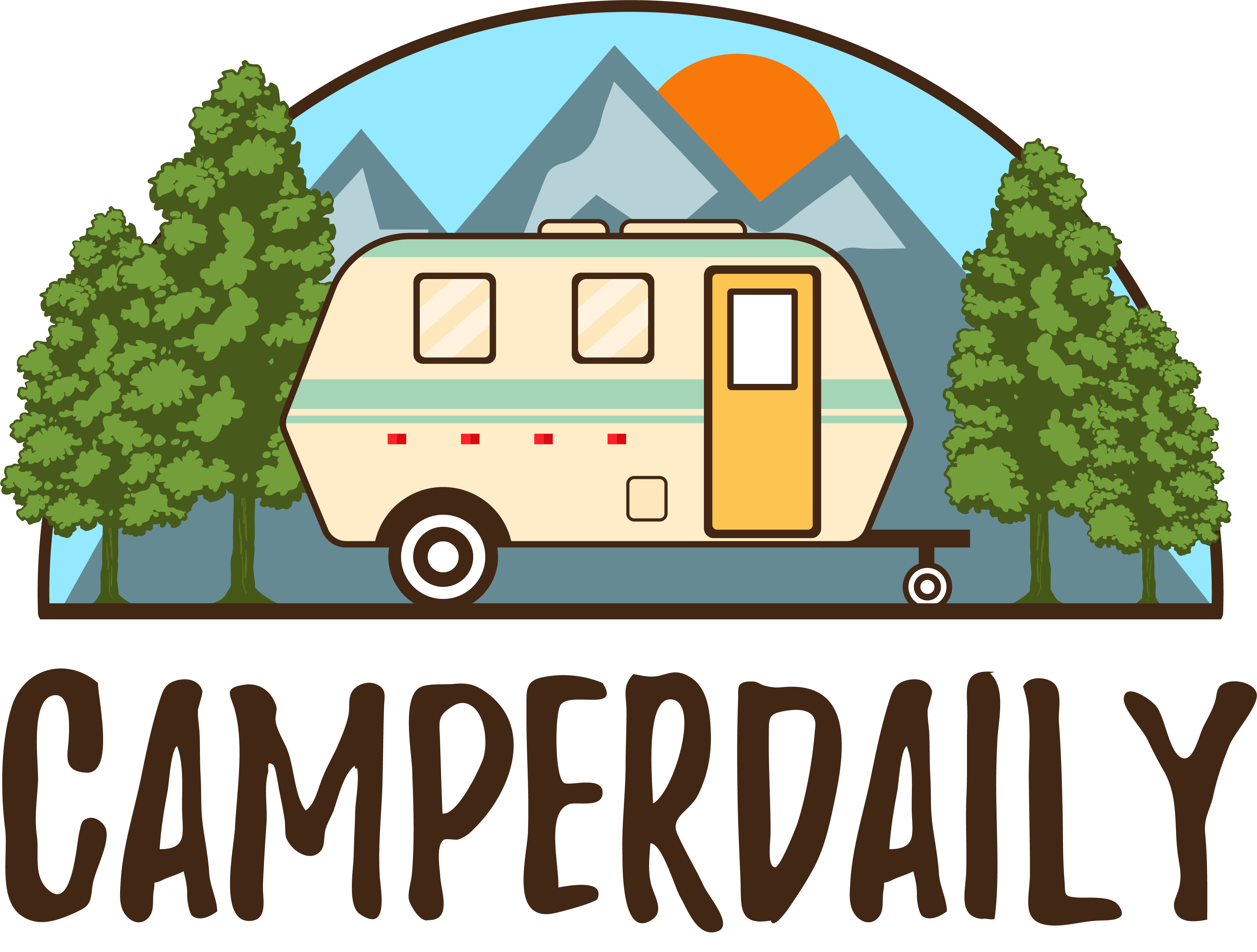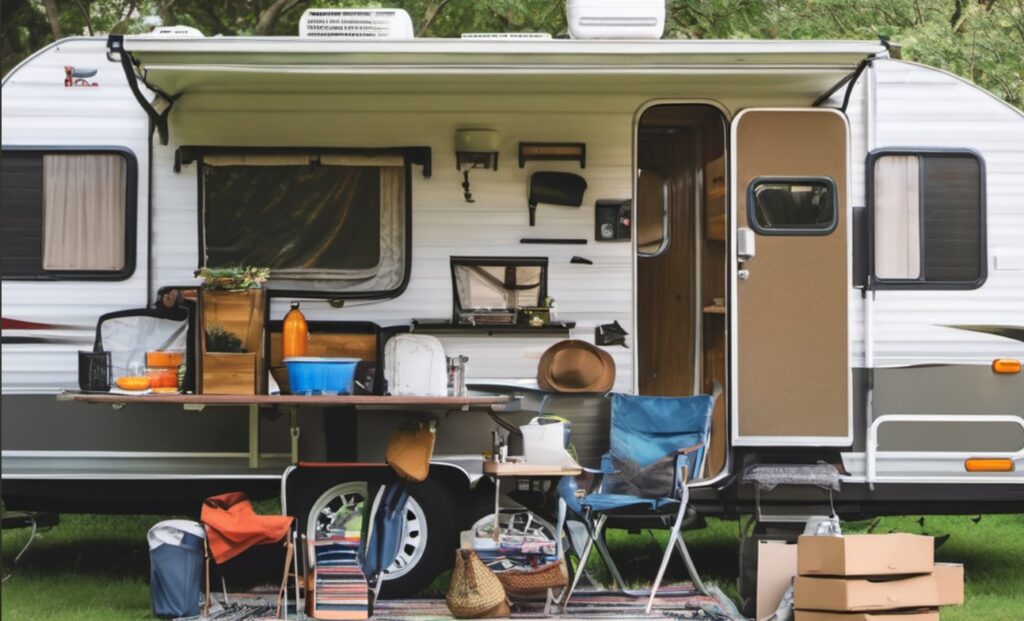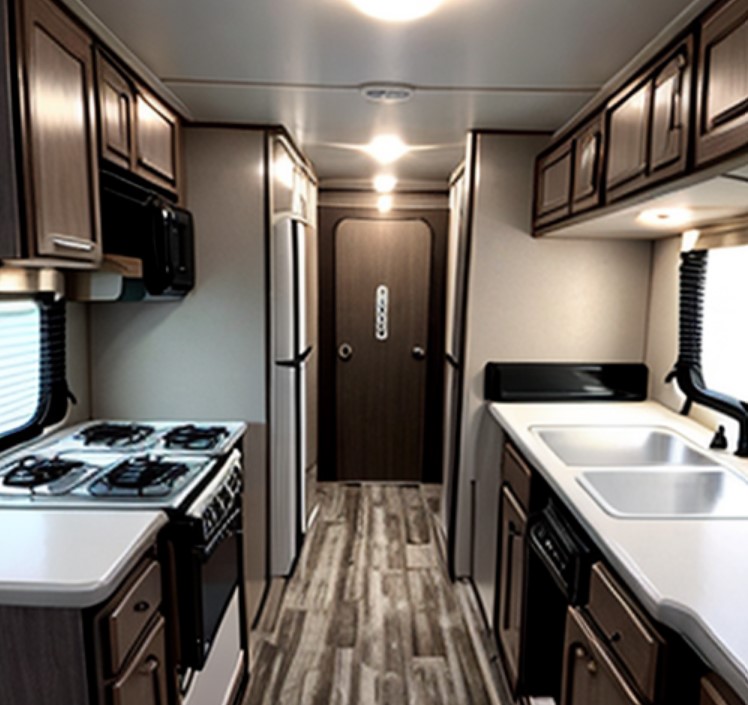I’m currently in the process of considering a change for my RV. I find myself torn between opting for a fifth wheel or pursuing a Class A motorhome.
This decision has proven to be quite challenging, as I’ve dedicated months to researching various models and seeking input from fellow RV enthusiasts. Throughout this process, I’ve compiled a list of factors that weigh heavily on my decision.
As you read through this article, please refrain from tallying up points for each option. The aim here is not to establish superiority between the fifth wheel and motorhome but rather to highlight their differences. What matters most are the significant factors that resonate with you and your family.
Residential-Style Furniture – Favoring Fifth Wheels
One advantage of opting for a fifth wheel is the type of furniture it offers. While I acknowledge that many Class A motorhomes boast exceptionally comfortable furniture, fifth wheels frequently incorporate standard residential furniture into their designs.
Based on my observations, I’ve found that, on average, fifth wheels tend to feature more comfortable furniture that evokes a homely ambiance. However, it’s important to note that residential furniture does come with its own set of drawbacks: it’s heavier, occupies more floor space, and typically lacks additional RV-centric features like underneath storage.
Cost of Maintenance – Favoring Fifth Wheels
Have you ever considered the expense of a routine oil change for a diesel Class A motorhome? It can range between $200 and $300—a significant sum. In contrast, the cost for an oil change on a vehicle like an F-350, commonly used for towing fifth wheels, is approximately $30.
Kitchen Island – Favoring Fifth Wheels
Introduction: It’s worth noting that many, if not most, new fifth wheel layouts feature kitchen islands, a feature rarely seen in Class A motorhomes. If your culinary aspirations involve cooking elaborate meals in a spacious kitchen, then a fifth wheel may be the ideal choice for you.
However, it’s important to consider both sides of the coin. While a kitchen island offers ample space for food preparation, it can also pose challenges. When the slide-outs are retracted, the presence of a kitchen island can make the room feel extremely cramped, which may not be conducive to enjoyable pit stops at truck stops.
Onboard Generator – No Clear Winner
Introduction: When it comes to onboard generators, Class A motorhomes typically come out on top, boasting this feature as a standard inclusion in most models produced within the last decade. On the other hand, while most fifth wheel trailers do not come equipped with an onboard generator, some do offer this option.
It’s worth mentioning that adding a generator to a fifth wheel is possible, but it may not always integrate seamlessly. Retrofit installations can sometimes lack the finesse of factory-prepped setups. A 5,500-watt Onan generator, for example, typically costs around $4,000 for installation.
For some, opting for a portable generator may seem like a viable alternative. However, for others, including myself, the hassle of transporting and setting up a portable generator can be a deal-breaker. In my experience with a travel trailer, dealing with a portable generator has often been more of a nuisance, requiring extra effort to pack and transport it each time it’s needed.
“Take Off” Time – Favoring Class A
For those planning frequent travels in their RV, the Class A motorhome holds significant advantages in terms of “take off” time – the duration between deciding to embark on a new journey and actually hitting the road.
The notable time-saving factors here include the stabilizers and the process of hitching up the towing vehicle. However, it’s worth noting that many newer fifth wheels are beginning to incorporate features such as auto stabilizing jacks, which could potentially mitigate this advantage of Class A motorhomes.
Turning Radius – Favoring Fifth Wheels
Turning both a Class A motorhome and a fifth wheel presents unique advantages. The Class A motorhome excels in turning due to its forward visibility; you can drive forward until the flat front of your windshield nearly touches an obstruction and then simply turn the wheel. The clear visibility and form factor of a Class A make the turning process feel more manageable.
However, when considering pure turning radius, the fifth wheel emerges as the clear winner. With the pivot point located at the rear axle of the towing vehicle, fifth wheels can execute sharper turns with greater ease.
Therefore, for navigating tight city streets, the fifth wheel holds the advantage. However, in terms of visibility and ease of turning, the Class A motorhome prevails (in my opinion).
Maneuverability to Small Spaces – Favoring Class A
Anyone who has witnessed fellow campers attempting to maneuver into tight spots in RV parks or campgrounds knows the struggle that can ensue, particularly with travel trailers or fifth wheels, which often require considerable effort and time to find the right position.
In contrast, docking a Class A motorhome in a camping spot is notably simpler. It resembles driving a long car, offering greater ease and maneuverability in navigating smaller spaces.
View – Favoring Class A
Introduction: There’s an undeniable allure to the expansive view afforded by the colossal windshield of a Class A motorhome when traversing the open road. It’s a breathtaking feature that enhances the allure of travel for many RV enthusiasts.
However, this impressive view comes with its drawbacks. The large windshield can turn into a heat trap for the entire vehicle on scorching hot days as intense sunlight streams through it.
Although the view isn’t accessible while driving, many fifth wheels compensate by incorporating sizable bay windows in slideouts or at the rear of the coach, which may mitigate this advantage for the Class A motorhome.
Ceiling Height – Favoring Fifth Wheels
For individuals who are tall or prefer ample space, the ceiling height of a fifth wheel presents a significant advantage. While motorhomes have made considerable advancements in this aspect over the past few years, on average, fifth wheels still excel in this regard.
However, it’s important to note a caveat regarding the ceiling height in fifth wheels. The front area, typically the master bedroom, often features lower ceilings similar to those found in travel trailers. But considering that most of your time in the bedroom is spent lying down, this might not pose a significant inconvenience.
Storage – No Clear Winner
Introduction: Both Class A and Fifth Wheel RVs offer excellent storage solutions, albeit in different ways. Fifth wheels typically boast more pass-through storage bays and feature at least two substantial storage compartments near the front of the coach. This is a notable advantage for fifth wheels, as they lack an engine or other driving components under the front area of the coach.
On the other hand, Class A motorhomes also excel in storage, with spacious middle compartments being a common feature.
Ultimately, the storage argument balances out. While the storage bays differ between the two types of RVs, neither one clearly outshines the other on average.
Steps – Favoring Motorhome
For older individuals or those with mobility challenges, a Class A motorhome holds a distinct advantage in terms of accessibility. Simply entering a Class A motorhome involves walking on a flat, single-level floor plan, which can be especially beneficial for those who struggle with steps.
In contrast, accessing a fifth wheel often requires navigating multiple steps without a railing, and additional steps may be necessary to reach the bedroom in front.
However, it’s important to note that these steps in a fifth wheel can be advantageous for some owners, particularly those with children. The steps help delineate spaces, reduce noise, and create visual barriers between rooms, offering parents some privacy while allowing kids to feel like they have their own private bedroom.
Riding vs. Driving – Favoring Class A
Arguably the most significant advantage of a Class A motorhome over a fifth wheel is the experience of driving from within the coach. This unique aspect is what convinces many people to stick with their Class A motorhomes, as the sensation of traveling in this manner adds a special dimension to the road trip.
Personally, I find myself torn on this matter. Currently grappling with the decision between a Class A and a fifth wheel, I keep coming back to this factor. Upon trying out a Class A with my family, we discovered that, for us, the experience wasn’t markedly different from sitting in the truck. Given that we wouldn’t allow the kids to walk around without a seatbelt anyway, the distinction between being buckled into the truck or the camper seemed negligible.
However, there’s an intangible allure to driving around in a vehicle that resonates with many, and it imparts a unique feeling to the road trip. It’s a tough decision to make. Even if all other factors lean in favor of a fifth wheel, I would still find myself pondering this aspect.
Towing vs. Toad – No Clear Winner
This factor is worth considering, and it’s one that didn’t initially cross my mind until I engaged with the Class A community. Like many, I grew weary of towing my travel trailer and thought transitioning to a Class A would alleviate this burden.
However, the reality isn’t as straightforward. Even with a Class A motorhome, you’ll likely still find the need to tow a car behind (known as a “toad”) for local transportation. Almost all Class A RVers opt to tow a small car behind their motorhome. Thus, towing remains a part of the equation, and in some respects, towing a toad can be more challenging, as it restricts your ability to reverse.
While a toad is lighter and follows behind the Class A without much issue during forward driving, it can pose challenges when navigating tight spots where backing up is necessary. Moreover, the process of hooking up and unhooking a toad is only marginally quicker than attaching a fifth wheel to a truck.
Toys – Favoring Fifth Wheel
Introduction: If you’re keen on hauling jet skis, four-wheelers, dirt bikes, or an ATV, the fifth wheel emerges as the clear victor in this category. While there are a few Class A toy haulers available, they are relatively rare. If bringing along toys is a priority, a fifth wheel is likely the preferable option.
While it’s possible to tow a trailer of toys behind a Class A, doing so would mean sacrificing your ability to tow a toad and navigate around town conveniently.
Pop-outs/Living Space – Favoring Fifth Wheel
Fifth wheels typically offer more expansive living areas compared to motorhomes. This is primarily because fifth wheels are not designed to be used with the slides retracted, whereas motorhomes are. Consequently, the slides in a motorhome tend to be shallower, resulting in less interior space.
Not only does a fifth wheel generally boast more square footage, but the rooms also feel larger due to the typically higher ceilings found in fifth wheels.
Backing Up – No Clear Winner
Undoubtedly, backing up a fifth wheel or any trailer can be challenging and less than enjoyable. However, I’ve categorized this aspect as a “tie” because most motorhome RVers also tow a toad car behind their vehicle. With a toad attached, backing up becomes problematic as it can potentially damage the steering mechanism of the car.
Type of “Get Around” Vehicle – No Clear Winner
The choice of “get around” vehicle largely depends on individual preferences. Some RVers prefer the convenience of having a small compact car behind their Class A motorhome for tasks like grocery shopping and city exploration. On the other hand, families like ours may find driving a truck as our regular family vehicle more comfortable than a compact car.
Ultimately, the decision between a compact car and a truck as a “get around” vehicle is subjective and based on personal preference.
Family Riding Space – Favoring Class A
One critical consideration for families, particularly those with multiple children, is seating space. With three children currently, accommodating a fourth in a truck can pose challenges, as younger kids aren’t typically allowed to ride in the front seat. Even if one child were to sit in the front, the remaining three would find themselves squeezed into the rear, resulting in a cramped experience.
While the layouts of fifth wheels may be ideal for many large families, it’s essential to ensure that everyone can comfortably fit in the tow vehicle. Opting for a truck with a crew cab or mega cab offers ample space and comfort for all passengers during the journey. However, if the truck has a small cab and children are relegated to the back, the ride may be less enjoyable for them.
Floor Plans! – Top Choice: Fifth Wheel
In my opinion, selecting a fifth wheel reigns supreme for one primary reason: floor plans. The sheer range of innovative floor plan designs aimed at maximizing space is truly remarkable! Given that the front section of a motorhome typically houses the driving area and a sizable window, the scope for inventive floor plans in a Class A is somewhat limited.
This isn’t to suggest that all Class A motorhomes share identical floor plans, but as a general rule, fifth wheels offer a far broader array of options.
Accessibility with Slides In – Leading Choice: Class A
This point has been touched upon a few times already. While traveling with the slides retracted, the Class A remains functional. Conversely, when making a pit stop for a bathroom break or a quick rest, utilizing a fifth wheel becomes notably challenging.
Climate Control – Top Pick: Fifth Wheel
When comparing factors such as size and the number of air conditioners, the fifth wheel holds a distinct advantage in maintaining a consistent temperature. This advantage stems from its absence of a massive windshield, akin to a sauna, often found in Class A models. Additionally, the absence of engine heat entering the living space further contributes to the fifth wheel’s superior climate control capabilities.
Fuel Efficiency – Neutral
When it comes to fuel economy, both options fall short. Opinions vary widely on which performs better—some argue in favor of the fifth wheel, while others claim the motorhome takes the lead. Ultimately, the outcome largely depends on your specific setup. However, it’s crucial to approach claims of impressive fuel efficiency from motorhome owners with caution. Before being swayed by reports of 11-14 mpg, inquire whether this is achieved while towing a car behind, as this significantly impacts fuel consumption.
Nevertheless, it’s essential to consider that not all driving scenarios involve long road trips. Much of your time on the road will likely be spent without towing, such as trips to the grocery store or sightseeing. In such instances, opting for a smaller tow vehicle or toad can significantly improve gas mileage.
Insurance Expenses – Preferable Choice: Fifth Wheel
When it comes to insurance, opting for a fifth wheel proves to be notably more cost-effective compared to insuring a motorhome. Several factors contribute to this discrepancy: Firstly, fifth wheels typically come with a slightly lower price tag than motorhomes. Secondly, since they are not driven separately, concerns regarding collisions with other vehicles are significantly reduced. Lastly, the mechanical complexities involved in operating the RV are fewer in comparison to a motorhome, further mitigating insurance risks.
Work Area – Champion: Fifth Wheel
While a select few motorhomes offer designated table spaces for working on a laptop within the RV, the majority often require RVers to sit at uncomfortable flat-back dinettes for work. Conversely, a greater number of fifth wheels are equipped with dedicated work areas, providing a more conducive environment for productivity.
Inclement Weather Handling – Superior Choice: Class A
In moments of adverse weather conditions, the Class A undoubtedly holds an advantage. Being inside a Class A means you don’t have to venture from the tow vehicle to the RV, sparing you the need to warm up the vehicle and shield yourself from the elements, ensuring a more comfortable and hassle-free experience.
Price Point – Top Selection: Fifth Wheel
Typically, a top-quality fifth wheel comes in under $70,000, while a luxurious Class A model can demand $300,000 or more. For those seeking budget options, a new entry-level fifth wheel can be acquired for around $30,000, whereas a low-end Class A might set you back approximately $85,000.
Undoubtedly, cost plays a pivotal role for most buyers when making their decision.
Family Separation – Equal Consideration
Introduction: Fifth wheels hold an edge with layouts that frequently position the kids’ sleeping quarters on one side of the RV and the parents’ sleeping area on the opposite side, providing a welcomed separation during the night.
On the other hand, Class A motorhomes excel in providing separation during travel. With the ability for kids to be positioned up to 15 feet back on the couch, engrossed in activities like drawing or playing on their iPods, while parents navigate from the front, a better sense of separation is achieved.
Safety Measures – Preferred Choice: Fifth Wheel
Introduction: When considering safety during travel, my belief leans towards the fifth wheel. Unlike Class A motorhomes, fifth wheels lack airbags, aren’t subjected to crash testing, and lack a designated “crumple zone” to absorb front-end impact.
In both Class A motorhomes and fifth wheels, the risk to the driver is relatively minimal due to the substantial space behind the driver within the RV. However, the primary concern lies in front-end impacts.
Additionally, in the event of a collision in a motorhome, various items such as knives, cabinets, and appliances become dangerous projectiles hurtling at the driver at high speeds. This risk is significantly mitigated in a fifth wheel since the passengers and driver are housed in a separate vehicle.
Try Before You Buy
If you’re contemplating purchasing an RV or camper, I highly recommend renting one beforehand to ensure it aligns with your preferences. RVs and campers represent significant investments, and purchasing the wrong one could prove to be a costly error. RVshare provides an excellent platform for discovering and renting RVs and campers in your vicinity, allowing you to test out various options before making a commitment.










